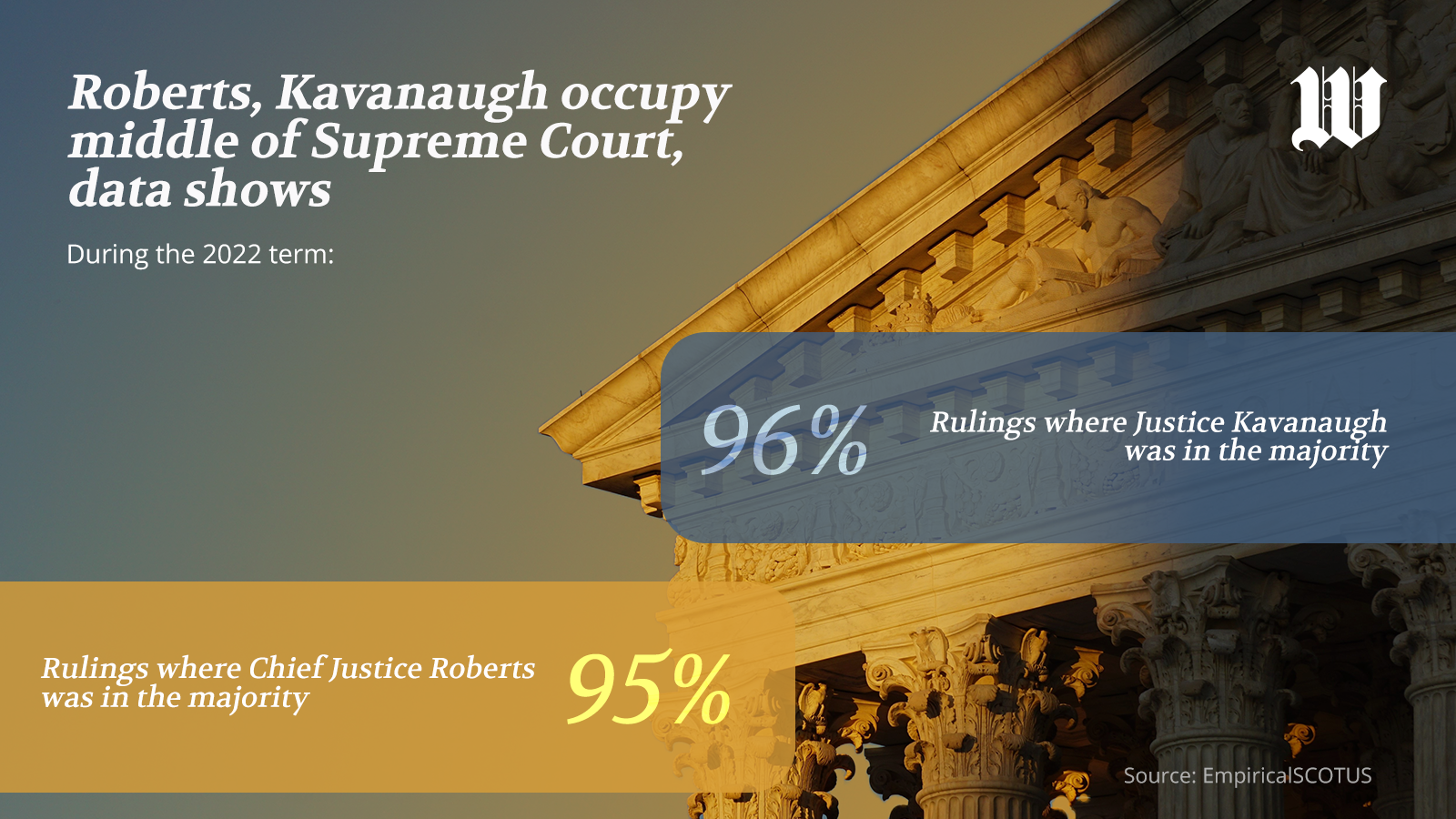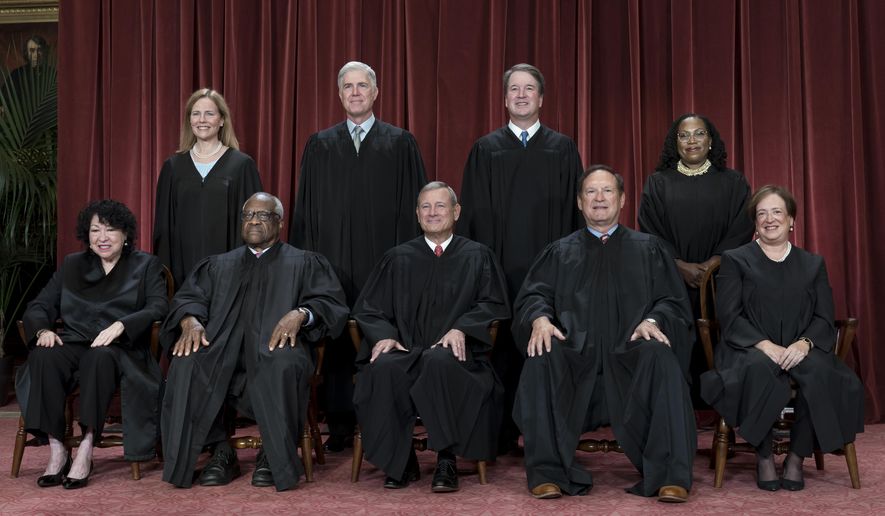Chief Justice John G. Roberts Jr. has found an ally in Justice Brett M. Kavanaugh in the middle of the Supreme Court bench, where they sided together on rulings more often than all other justices in the 2022 term.
Chief Justice Roberts has been known as the Supreme Court’s centrist member since Justice Anthony M. Kennedy, a reliable swing vote, retired in 2018.
Justice Kennedy’s replacement, Justice Kavanaugh, has been keeping the chief justice company. The two were in the majority more often than their colleagues this year, said Adam Feldman, a Supreme Court scholar and creator of the Empirical SCOTUS blog.
“Kavanaugh and Roberts were really the center of the court this term,” Mr. Feldman said. “They really had a lot of sway in what direction the court went.”
Justice Kavanaugh was in the majority 96% of the time for the court’s rulings issued during the 2022 term, and Chief Justice Roberts was in the majority 95% of the time.

Together, they have reached agreement in 98% of the cases overall, Mr. Feldman’s research shows.
Curt Levey, president of the Committee for Justice, said Justices Neil M. Gorsuch and Amy Coney Barrett also served as swing votes.
Justices Gorsuch, Kavanaugh and Barrett were appointed by President Trump, who promised in his 2016 campaign to nominate conservative jurists to the court. He formed a list of conservative lawyers, politicians and judges as potential high court appointments to make the process more transparent.
Justice Barrett has been increasingly in the majority since she joined the high court in 2020.
Mr. Feldman’s data shows that she went from being in the majority on opinions 74% of the time during her first year to 86% during her second year. During her third term, she was in the majority 91% of the time.
Justice Gorsuch sided with the majority of the court 83% of the time this year.
Carolyn Shapiro, co-director of the Institute on the Supreme Court of the United States at Chicago-Kent College of Law, said having Justice Kavanaugh and Chief Justice Roberts in the middle of the bench shows the right-leaning composition of the court, providing minimal “relief” from the conservative wing’s reach in overturning precedent.
She said the interruptions to the law, such as the ruling overturning national abortion rights last year, show the court is “moving in this extremely conservative and potentially destabilizing direction.”
The most conservative member is Justice Clarence Thomas, according to Mr. Feldman’s analysis, which points to his concurrences on the abortion decision last year and the elimination of affirmative action this term. Justice Thomas suggested he would have gone further on the right to privacy when he said he wanted to eliminate any vestige of race in the admissions process.
“His separate writing is where Thomas distinguished himself even more from any of the justices on the right. I think [Justice Samuel A. Alito Jr.] is a close second in terms of his position on the court on the right of the court,” Mr. Feldman said.
He said Justice Sonia Sotomayor remained the court’s most liberal jurist, even after Justice Ketanji Brown Jackson took the bench for her first term.
“Sotomayor is to the left of Jackson, although perhaps less than some expected this term. We see a bit of this difference through these two justices’ votes this term and especially with Jackson ending in the majority more frequently than Sotomayor for the term,” Mr. Feldman said.
• Alex Swoyer can be reached at aswoyer@washingtontimes.com.




Please read our comment policy before commenting.